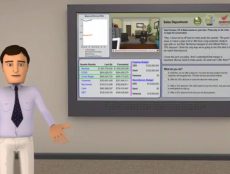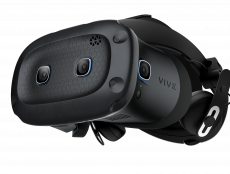
Articles
Education Technology
Interviews
Supporting Employees in the Changing Business World: Intellum Framework
By Aniqah Majid
January 24, 2022
24 JANUARY – Business education initiatives are rapidly adapting to the demands of modern employees. A recent Ladders report found that over a quarter of professional jobs in the US will be fully remote by the end of the year. This trajectory is compounded by the current industry standard of employees with basic digital skills training, everywhere from administration to cyber-security.
These factors, which are essential in developing a prepared workforce, are what businesses are struggling to integrate into their education programs. A 2014 survey from DecisionWire found, amongst one-million employees from various fields, that nearly one-third of line-level managers felt that they lacked the information required to do their job effectively. In contrast, 78% of mid-level managers said they did have the required information. These findings highlight a discrepancy of knowledge when it comes to internal business practices.
Intellum, a business education solution for customers, employees, and partners, recently launched the Intellum Framework. A step-by-step process, which provides a foundation for companies to enact their education strategy.
The Framework was developed by Intellum CEO Chip Ramsey’s trialed and tested methodology. It is composed of three guided exercises that focus on a company’s key performance indicators: goals, audiences, and content. The worksheets work by relying on buildable objectives for each section, from what problem needs to be solved, to what education initiative or resources are being put in place. Let’s say a company is experiencing a declining customer renewal rate. The Framework guides them through an exercise of identifying what audiences impact that problem and what educational initiatives can help those audiences make positive changes to achieve the goal of having happier, more engaged customers who want to renew.

eLearning Inside spoke to the Chief Strategy Officer and VP of Education Strategy, Vicky Kennedy, about the development and purpose of Intellum Framework.
“In 2019 Chip (Ramsey) had done a lot of work with the methodology itself and worked with different clients to demonstrate why a repeatable procedure can create successful educational programs with meaningful impact. I was part of the client side so I was part of that whole process of giving feedback and homing in on this methodology. This includes: making sure you have a business goal, that you understand your audience and you’ve identified audience needs and learner personas, and that you have the right resources in place to do all this because educational programs require unique resources that other types of content issues don’t. It’s different from a marketing content initiative, it requires its own unique resources.”
When all three worksheets are completed, a final mapping worksheet is done to piece all the objectives together and provide a cohesive action plan for the company’s education program.
“We look at each initiative from the perspective of achieving a goal,” said Kennedy. “We map it all together at the end, so we say “this audience member participated in this certification, and they passed with an 85% score, and because of that they renewed their contract for six months. We start telling that story with education, and that’s what the Framework does. Bring it all together so we can actually see the story we’re trying to tell and make sure that everyone is on the same page to work towards the same goal.”
Intellum Framework was trialed on Kennedy’s own team to see whether the Framework created a positive change.
“I actually went through the exercise with my own team as an initial practice and it was quite interesting to see how it’s not just about filling in this sheet, it’s not just an academic exercise. It forces a lot of conversation around “what is the goal here, how did these two programs work together, how did these two audiences interact and what are we trying to achieve with this.” I used that conversation as kind of a framework to the Framework. As we rolled it out with different clients it’s kind of the same phenomenon where you see that it’s not just filling out a worksheet but it’s really sparking conversation around business goals.”
Kennedy goes on to discuss the main purpose of this exercise is to help companies prioritize their goals. “Business goals are the most important thing. It’s the first thing that we recognized in the methodology, to make sure that you are actually achieving ROI with education, and going back to my L&D examples, it makes things a little clearer for businesses, who are focused on educating employees and want to see a change in employee performance.”
Intellum is partnered with a catalog of industry giants, including Google, Amazon, and Mailchimp. The gap for upskilling employees remains wide, with 1-in-3 Americans having the potential to access higher-paid jobs with the right to skills training. Intellum Framework has the potential to be a game-changing tool for mass-scale employee education.
Featured image: Intellum.









[…] over the past couple months, and numerous news articles asked stakeholders what they thought all of this means for student privacy and schools, especially around Mark Zuckerberg’s testimony to Congress. In […]